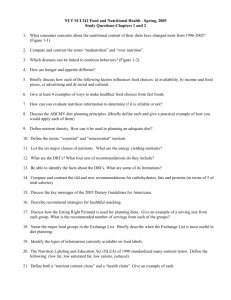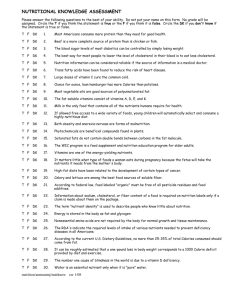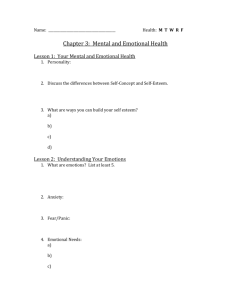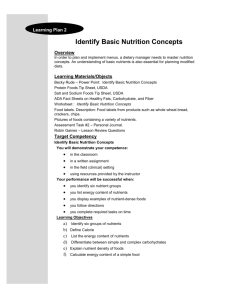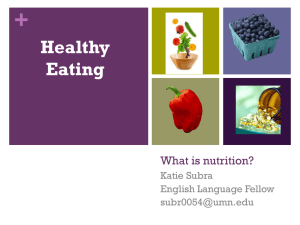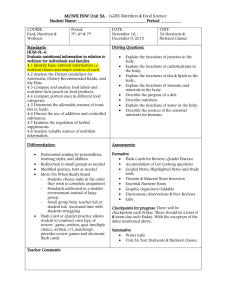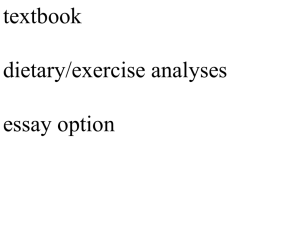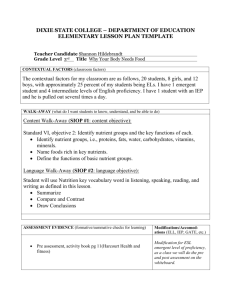Chapter 1 Outline
advertisement
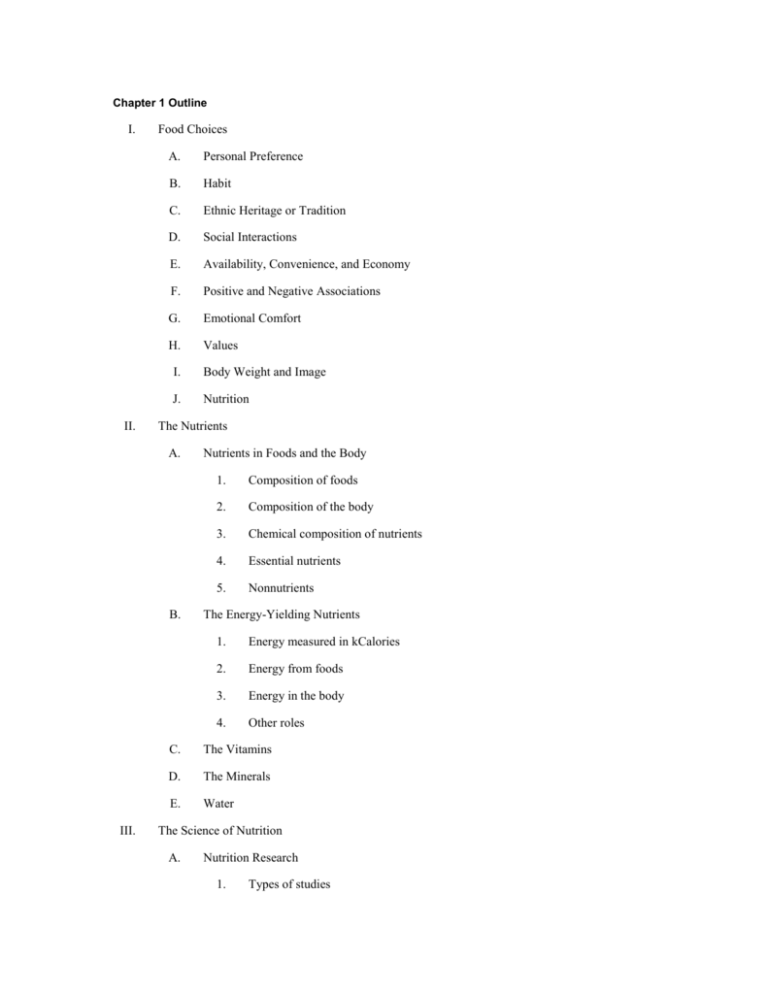
Chapter 1 Outline I. II. Food Choices A. Personal Preference B. Habit C. Ethnic Heritage or Tradition D. Social Interactions E. Availability, Convenience, and Economy F. Positive and Negative Associations G. Emotional Comfort H. Values I. Body Weight and Image J. Nutrition The Nutrients A. B. III. Nutrients in Foods and the Body 1. Composition of foods 2. Composition of the body 3. Chemical composition of nutrients 4. Essential nutrients 5. Nonnutrients The Energy-Yielding Nutrients 1. Energy measured in kCalories 2. Energy from foods 3. Energy in the body 4. Other roles C. The Vitamins D. The Minerals E. Water The Science of Nutrition A. Nutrition Research 1. Types of studies B. IV. Epidemiological studies b. Case-control studies c. Animal studies d. Human intervention trials 2. Controls 3. Sample size 4. Placebos 5. Double Blind 6. Correlations and Causes Research versus Rumors Dietary Reference Intakes A. V. a. Establishing Nutrient Recommendations 1. Estimated Average Requirements 2. Recommended Dietary Allowances 3. Adequate Intakes (AI) 4. Tolerable Upper Intake Levels B. Using Nutrient Recommendations C. Comparing Nutrient Recommendations Nutrition Assessment A. B. Individuals 1. Historial information 2. Anthropometric data 3. Physical examinations 4. Laboratory tests 5. Iron example Populations 1. 2. National Nutrition Surveys a. Food consumption surveys b. Nutrition status surveys National Health Goals VI. VII. Diet and Health A. Chronic Diseases B. Risk Factors for Chronic Disease 1. Risk factors persist 2. Risk factors cluster 3. Risk factors in perspective Highlight: Nutrition Information-Experts and Quacks -On the Net and In the News A. Nutrition on the Net B. Nutrition in the News C. Identifying Nutrition Experts 1. Physicians 2. Registered dietitians 3. Others D. Identifying Fake Credentials E. Identifying Valid Information
